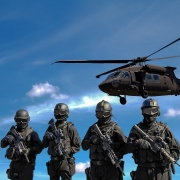How to ace the JC History SBQ?
How to answer Source-Based Case Study Questions? For A Level History, answering a source-based question (SBQ, in short) requires effective reading and writing skills. Given that the examination is 3-hours long, it is crucial to plan your time well. Therefore, we will examine some key concerns in handling this segment of the A Level History subject.
What is Source-Based Case Study? With reference to the syllabus description stated at the Singapore Examinations and Assessment Board (SEAB), the source-based case study features a series of extracts that discuss a common theme (such as Cold War or Inter-state Tensions). Students are expected to have a firm understanding of these sources and their given contexts. There will be a maximum of six sources provided in this Section, in which these sources can be depicted in either text (e.g. statements, interviews, accounts and speeches) or visual (e.g. posters) forms.
Given this understanding, we will now focus our attention on the answering of SBQs through the following considerations.1. Read and identify the question requirement Before you start to read the sources, you should look at the page that entails the questions to be answered for the SBQ. By reading the question, you will be more aware of what to look out for as you read every source. Also, try to analyse the keywords stated in the question description to pinpoint the perspective to analyse.
The SBQ contains the two questions: A 10-marks two-source comparison question and a 30-marks source comparison and analysis question. Below, we will illustrate an example question to understand this aspect better: Sample part (a) question: Compare and contrast the evidence provided in Sources A and B about the attitude of Stalin towards USA in the post-WWII period. [10] Sample part (b) question: How far do Sources A-F support the view that USSR was responsible for the outbreak of the Cold War? [30] For the part (a) question, you are expected to compare two sources and identify the ‘attitude of Stalin towards the USA’. Source comparison involves identification of similarities and differences between the two sources. For the part (b) question, you are to analyse all sources to find out whether each source support or challenge the given perspective that ‘USSR was responsible for the outbreak of the Cold War’.2. Read and annotate each source After you have read and understood the question requirements, focus your energies on understanding each source. One useful way is to use a pencil to mark out parts of the source that can answer the question. You can also use a highlighter to denote excerpts from each source that can support your SBQ answering. This process of reading and annotation is important as it is a planning stage for you to prepare yourself mentally. In a way, the annotation helps in organising your thoughts before you commence writing.
3. Understand the context and nature of each source As mentioned earlier, pay attention to the types of sources given in the SBQ. For the text-based sources, they can be illustrated in the form of news article, academic publication, interviews, speeches and official statements etc. For visual-based sources, they are depicted in the form of posters, satirical cartoon etc.
In view of these diverse types of sources, it is important to be familiar with how each type is being described and illustrated, so that you can extract the relevant information and underlying message within each source. For example, personal interviews with an important figure (e.g. Secretary-General of a regional organization) are useful in assuming their standpoint to discuss certain issues, but pay heed to their official position, which may restrict the extent of information provided.4. Organise your writing Throughout the course of your writing, it is of utmost importance to develop a well-structured SBQ answer. You can address this concern effectively by employing various means, like signposting and topic sentence writing. For instance, you can include the use of connectors to guide the examiner from one sentence to the next. If you have quoted an excerpt of the source to provide evidence and desire to explain it, you can use phrases like ‘this means that’. This ensures that you are making a clear point in your writing.
5. Practice. Practice. Practice It takes consistent practice to develop the necessary reading and writing skills to ace the A Level History SBQ component. Fret not, we also conduct JC History Tuition SBQ answering skills workshops to hone your writing techniques. During the lessons, you will have many opportunities to attempt practice questions. As it is unrealistic to pursue the idealistic goal of acquiring all skills in several sessions, we will be focusing on one or two skills during the programme. This ensures that you can pay attention to the intricacies of the skills development process.
6. What’s Next? On a related note, you can learn more about the essentials of A Level History essay writing in this featured article. JCHistoryTuition.com.sg features a broad range of articles that cover useful examination tips and issue-based discussion to expand your knowledge as you gear up for the A Level History examination.
The H2 and H1 History Tuition feature online discussion and writing practices to enhance your knowledge application skills. Get useful study notes and clarify your doubts on the subject with the tutor. You can also follow our Telegram Channel to get useful updates. We have other JC tuition classes, such as JC Math Tuition and JC Chemistry Tuition. For Secondary Tuition, we provide Secondary English Tuition, Secondary Math tuition, Secondary Chemistry Tuition, Social Studies Tuition, Geography, History Tuition and Secondary Economics Tuition. For Primary Tuition, we have Primary English, Math and Science Tuition. Call 9658 5789 to find out more.










